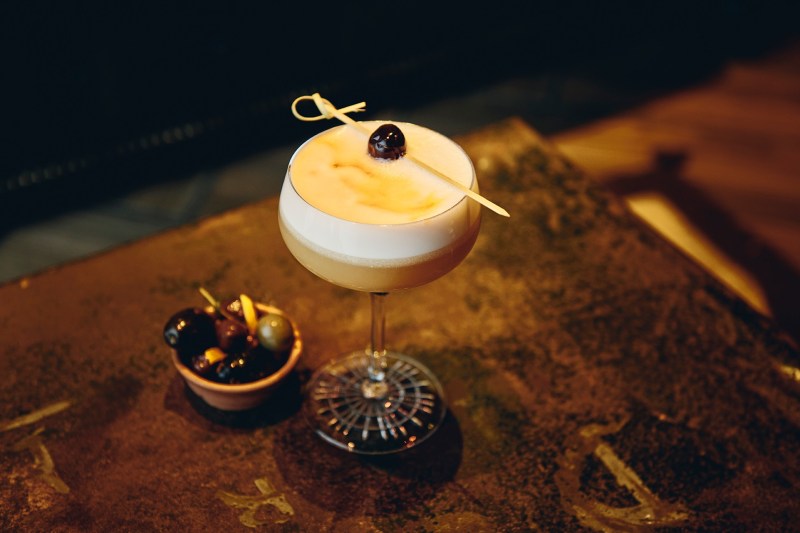In the family of sour cocktails, the Amaretto is a lesser-known but incredibly tasty option. It remains a classic across the American bar map, an offshoot of more famous formative drinks.
Most of us know about the Whiskey Sour or the Pisco Sour. But what of the Amaretto Sour? As the name stipulates, it’s based around the highly unique Italian liqueur, born in Saronno. Made from bitter almonds, apricot kernels, and more, amaretto is a nutty elixir, perfect for cocktails as well as an accompaniment to a good cup of coffee.
Related Guides
Like so many alcoholic inventions, the exact origins of the Amaretto Sour are a little hazy. It’s quite conceivable that the creator and their company simply made too many and a forgetfulness set in. Many believe the drink came about in the 70s, somewhere between Nixon and disco. The idea was right — to brighten the earthier notes of Amaretto with something sour — but admittedly, the first versions of the drink were nothing to write home about.

Morgan Weber is the beverage director and owner of Agricole Hospitality. One of the group’s restaurants, Miss Carousel, has a special affinity for the Amaretto Sour, especially an improved contemporary version. The Houston establishment reserves a place for it in the class section of its impressive cocktail list. Weber says the classic Amaretto Sour tends to lean too heavily on its namesake ingredient.
“Since its inception, Amaretto Sours are typically made unbalanced with too much emphasis on the Amaretto,” he says. “Utilizing a high-proof spirit as the backbone of the cocktail is essential to give it grip.” Weber tends to opt for a hefty rum to do the trick. Other bartenders, like Jeffrey Morgenthaler of standout bars Pepe Le Moko and Clyde Common, go with a cask-strength bourbon.
It’s important to note that many bartenders have set out to improve the nature of this sour, somewhat put off by the fact that the first installment involved pre-made and relatively flavorless ingredients like sour mix. Thanks to the second coming of cocktail’s golden era, the drink has been properly restored, more than deserving of its classic status.
To complement the base spirit and offer balance, Weber says it’s key to use fresh lemon juice and a high-quality Amaretto. Disaronno is one of the more popular versions, but we also like Adriatico. Weber usually opts for Luxardo, drawn to the bitter almond and vanilla notes. Perhaps even more importantly, it’s all about mouthfeel, as is typically the case when working with egg whites. “In Miss Carousel’s Amaretto Sour, we use egg white to create texture, shaking it long enough to emulsify the egg white,” Webber adds. “You can almost not shake it long enough!”
Also, to add some flair, note Weber’s treatment of bitters in the below recipe. It’s a cool effect not unlike what your favorite barista will design in the foam of your latte.
Miss Carousel Amaretto Sour
- 1.5 ounce Amaretto
- .75 ounce dark rum
- 1 ounce fresh lemon juice
- .25 ounce simple syrup
- 1 whole egg white
- Angostura bitters for garnish
Method: Combine all ingredients in a cocktail shaker and dry shake for about 90 seconds to emulsify egg white. Open shaker and fill with ice. Shake until well-chilled. Strain into a chilled cocktail coupe and garnish with three dashes of
Editors' Recommendations
- The classic vodka cocktails you need to know how to make
- How to make an Old Fashioned cocktail the right way
- How to make the best vodka gimlet for a twist on a classic
- Get creative: How to use hibiscus in your cocktails this spring
- How to make the Earthquake cocktail in just 4 simple steps


